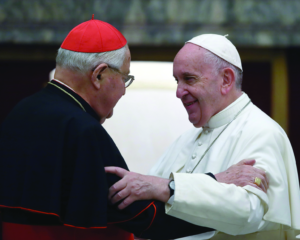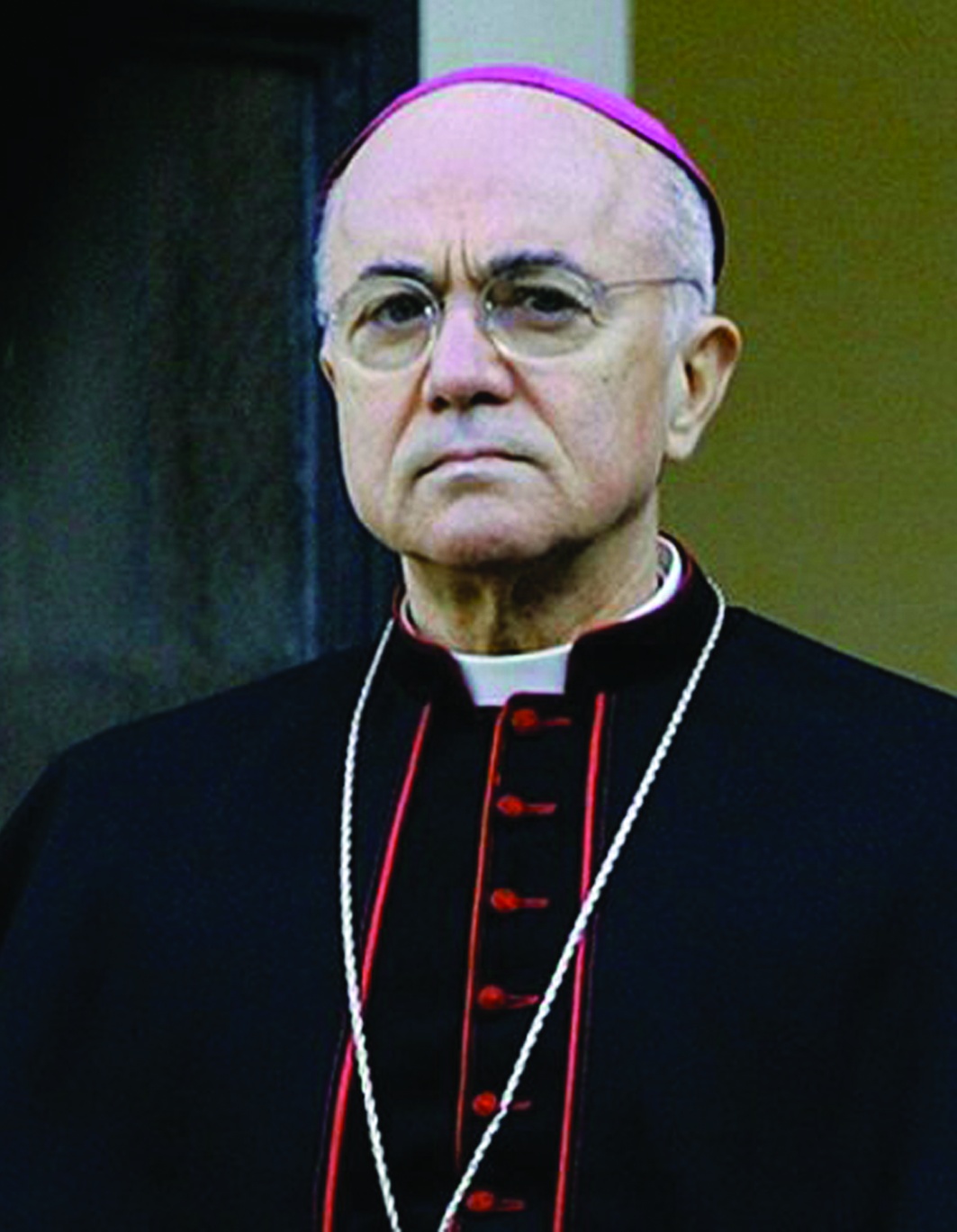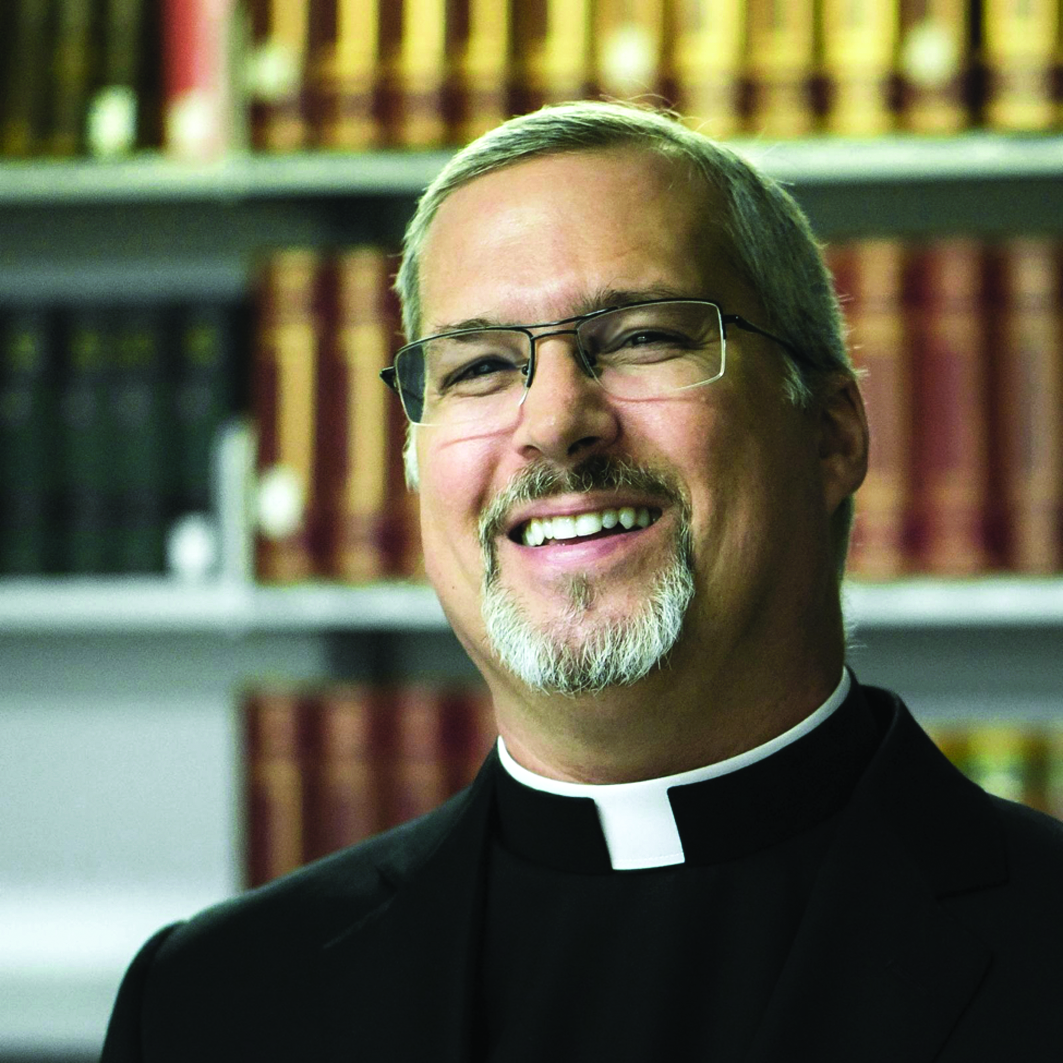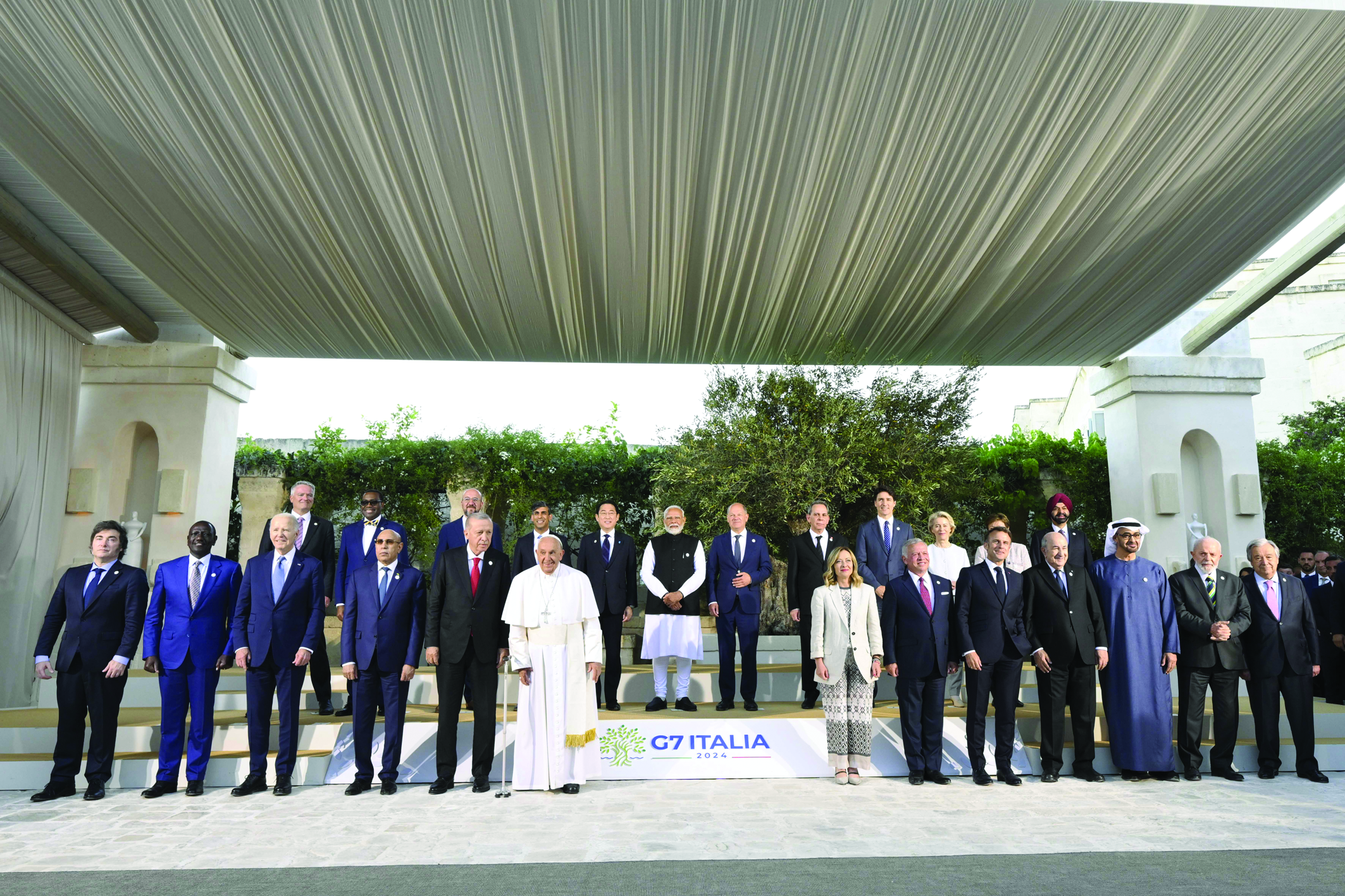Veteran journalist Luis Badilla recalls the powerful cardinal’s long career — and the “style of government” that he exercised — as it comes to a close
By Luis Badilla (Il Sismografo)

On December 21, 2019, Pope Francis’ met with the Roman Curia to exchange Christmas greetings. Below, the moment that he greeted Cardinal Angelo Sodano (Galazka Photo)
Perhaps one day the complete story will emerge, revealing the real role of Cardinal Angelo Sodano since he arrived at the Apostolic See 60 years ago, called to serve the Pope by Cardinal Angelo dell’Acqua. He was then 32 years old… Today he is 92. His departure is the end of a mode of existence for the Church that should be eradicated forever.
Cardinal Angelo Sodano, after 14 years, is no longer the Dean of the College of Cardinals.
The cardinal turned 92 on November 23. His career in the Roman Curia practically began in 1959, over 60 years ago, and since then he rose, relentlessly, until he became Secretary of State for two pontiffs — Karol Wojtyla and Joseph Ratzinger — from 1991 to 2006 (15 years). After three years in the position of Vice Dean of the College of Cardinals, in 2005 he was elected by the cardinal bishops as Dean, and in that same year Benedict XVI approved this choice.
For Angelo Sodano, however, having been Dean of his cardinal conferres is certainly the least important element of his ecclesiastical career.
The departure from the scene of Cardinal Sodano, after almost half a century in the luminous and transparent corridors, but also in the dark and mysterious ones, of the Roman Curia — always remaining close, and sometimes very close, to four Popes — is an epochal event.
It doesn’t happen every day.
Angelo Sodano was not just any cardinal and therefore his “unexpected” retirement, because Pope Francis wanted it only now, is a very important point of passage and, hopefully, also a decisive one.
Even better, with his exit from the scene, a style of government of the Church also exits, one that was inspired and set up by a man who for decades has been the real center of power in the context of the curial nomenklatura: from appointments in general to the curial game of “rise and fall.”
For years a leaf did not move in the Vatican unless Cardinal Sodano wanted it to. The years of the pontificate of St. John Paul II were also the years of the “reign” of the Angelo Sodano-Stanislaw Dziwisz tandem.
Cardinal Sodano was nominated Nuncio in Chile in 1977, where he had already been an officer of medium-low level, four years after the coup d’état by Augusto Pinochet, with whom he was a very close personal friend, and in a few instances also conniving and complicit in the wrongdoings of the dictator. (1)
(Many truths of this period have begun to come out in these months, after Francis’ visit and after the devastating crisis that has consumed the Chilean Church — and in which the cardinal has great direct and personal responsibility.)
In these hours, the merits, and not a few, of Cardinal Sodano are also remembered, as is right. But it is also just as fair and honest to remember his actions, decisions, and convictions that humiliated, wounded and betrayed the word and spirit of the Gospel. Not doing so would be pure hypocrisy, as it is widely acknowledged in private that the judgments made by the cardinal have often reflected the image of him presented here.
On May 28, 1988, John Paul II, who wanted to attribute — in a rather questionable way—the great success of his visit to Chile (1983) to Nuncio Sodano, called him to the Vatican to appoint him Secretary of the then-Council for Church Affairs. On March 1, 1989, with the entry into force of the Apostolic Constitution Pastor Bonus, Sodano then assumed the title of Secretary for Relations with States. The official biography of Sodano on the Vatican.va site at this point states: “On December 1, 1990, he was called by the confidence of the Holy Father to take on the Office of Pro-Secretary of State, becoming Secretary of State on June 29, 1991, once created Cardinal. “
From this moment on, the power of Cardinal Sodano became total, absolute, incontrovertible, and often more incisive than that of Pope John Paul II, who was very busy in his pastoral ministry, and subsequently very limited by his illnesses. The real, concrete, everyday government of the many, delicate, and tangled mechanisms of the life of the Church all passed into the hands of the Piedmontese cardinal born in Isola d’Asti.
In this long period there are painful events in the life of the Church, some even gruesome, which have up to now hurt the soul of the whole ecclesial community and for which Cardinal Sodano bears heavy responsibility.
Such is the coverage and protection of the serial pedophile Marcial Maciel, founder of the Legionaries of Christ, even when the then-Cardinal Prefect Joseph Ratzinger asked the Secretary of State in vain for different conduct towards the Mexican priest, then revered at the Vatican as a “saint” even if it was known that he was a great corruptor. (2)
Or, there is the case of the never-clarified pedophilia affair involving the archbishop of Vienna, Cardinal Hans Wilhelm Groër (1995), which the current archbishop Christoph Schönborn denounced years ago, accusing Sodano of blocking the creation of an investigative commission and therefore of sandbagging the matter. It will also be remembered that in public remarks to Pope Benedict XVI, Cardinal Sodano, then-Secretary of State, called the complaints on cases of clerical pedophilia “chatter” and never had a single word of solidarity towards the victims. Schönborn protested because, in his view, it was a real offense against abused people. (3)
The life of the universal Church between 1991 and 2006 had an iron-gripped helmsman in Cardinal Angelo Sodano, who managed to shape most of the world’s episcopates according to his ideas, beliefs, interests, and projects. The cardinal, even after his retirement in 2006, continued as Dean to exercise important influence and surely when the history of this period is written, it will be possible to fully understand the different phases of the true role of Sodano in the Vatican in the time since he arrived at the Apostolic See 60 years ago. He was then 31… Today he is 92.
Notes
(1) The author of this article has in the past been the victim of the requests and pressures of Card. Sodano, urged by the Chilean dictator Pinochet, that he be fired from Vatican Radio, a maneuver blocked personally by Pope John Paul II and the courage of two great Jesuits: Cardinal Roberto Tucci and Father Pasquale Borgomeo, who were not afraid to face the powerful Secretary of State.
(2) Legionaries and child sexual abuse (Congregation Report, 20 December 2019) – Report of the Legionaries of Christ: 175 cases of abuse occurred in 78 years, 60 of which attributed to the founder Marcial Maciel… 33 priests involved Il sismografo – Legionarios de Cristo: Radiografía de ocho décadas para erradicar el abuse (regnumchristi.org)
– Legionaries of Christ Release a Letter: Our Commitment to Safe Environment (regnumchristi.org)
Marcial Maciel’s privileged weapon for keeping other powerful men under blackmail, and for buying their silence, was money, and in this sense his, for years, has been a gigantic work of corruption of certain Vatican leaders, among whom he had distributed envelopes with thousands and thousands of dollars in cash.
Authoritative sources say that a great Churchman, then the Cardinal Prefect, was invited by Maciel to give a conference at a Legionaries of Christ seminary and at dinner time, in front of the plate, he found an envelope with thousands of dollars, which he obviously refused with anger and disgust. Maciel also distributed a lot of money among journalists, book writers, opinion makers and publishers.
(3) Story of Cardinal Groër Note the painful story of the criticisms of Cardinal Christoph Schönborn to Secretary of State Sodano on the way in which the Groër affair had been managed in the Vatican: it came to an unprecedented, never-before-seen conclusion: the Vatican Press Room published a singular and curious “Note” in which it was said that the cardinals could only be criticized by the Pope (then Benedict XVI).





Facebook Comments